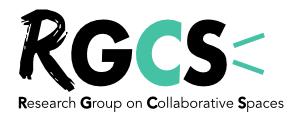By François-Xavier de Vaujany and Albane Grandazzi
Our learning expeditions in collaborative spaces and our ethnographies of new work practices have been the opportunity to use numerous diaries, reports and note books to keep a trace of what we saw, what people said or what we felt.
Such a practice is not new in ethnography and auto-ethnography. Ethnographers have always collected and self-produced the narrative traces of their experience. They have always done it asynchronously (e.g. at the end of the day…) or synchronously (in the flow of what they were observing). We would like to stress here an embodied, material, visible aspect of ethnography as a practice: the gesturing of notes, sketches, traces of our shared experience with the people and societies explored.
More than ever, in a digital, largely disembodied, world, gestures and physical movements of the ethnographer are key micro-practices on the field. Our ethnographies and learning expeditions (in particular the long ones with two, three or four days of field trips with a group) have made this issue particularly visible.
Firstly, using expressively, obviously, visibly log books is a way to create boundaries with people encountered. As shown by Camille Bosqué in her ethnography of makerspaces and FabLabs, it is a way to create a tie and a bubble with people met. In the context of our ethnographies and walk, we noticed the importance of using our log book, putting it on a table while talking, putting a pen close to it, drawing a figure, a map, a story… and letting implicitly the people interviewed taking the diary and writing, drawing on it (see figure below). Taking at some point a second pen, and doing it together. Some very shy, distant people became much more confident at this point. Most of all, this co-produced, shared trace has been often precious to express subtle things about the place. To make us reminded month after our ethnographies, we sometimes attached a picture of the sketch co-produced. In her doctoral work, one of us (Albane Grandazzi) uses the notion of “boundary gesture” to label this kind of bounding, spacing, spanning embodied practice.

Figure 1: the use of log books as boundary gestures (source: authors’ own)
Then, in particular in the context of makers, hackers, coworkers, i.e. DIY and DIT oriented doocracies, this visible doing has been a way to find our place in. We are also doers, we write, sketch (at least we try…), share, make thinks concrete and visual! In a place where one of us (François-Xavier de Vaujany) did another ethnography (an artistic makerspace in Paris), we even felt that it was a way to share a collective dance, to be harmoniously in the shared movement that made the place.
In the context of Open Walked Event Based Experimentations (OWEE), the visible and shared use of log books is important, but also different. We explore societies, but we also share an experience with a group people which is also part of the observation. Taking notes, in a shared or selfish way is not easy (we move and we walk a lot) and probably counter-productive. But we have also started to experiment the practice while seated, in more transitory situations…
To be continued…
